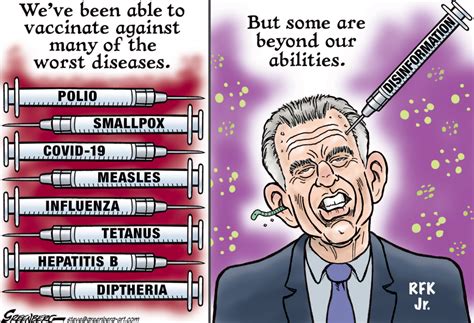
Florida beaches are grappling with alarmingly high bacteria levels, earning some locations the unwelcome distinction of being among the dirtiest in the United States. Environment America Research & Policy Center’s latest report indicates a concerning trend of fecal contamination, posing potential health risks to swimmers and prompting calls for improved water quality monitoring and infrastructure upgrades.
Florida, renowned for its pristine beaches and vibrant tourism industry, faces a significant challenge as fecal bacteria levels surge, jeopardizing public health and impacting local economies. According to the Environment America Research & Policy Center’s “Safe for Swimming?” report, numerous beaches across the state have recorded bacteria levels exceeding the Environmental Protection Agency’s (EPA) safety threshold, raising concerns about waterborne illnesses among beachgoers.
The report analyzed data from over 3,000 beaches nationwide, revealing that a substantial number of Florida’s coastal recreational areas experienced elevated bacteria counts, primarily attributed to fecal contamination. This contamination stems from various sources, including stormwater runoff, sewage overflows, agricultural runoff, and malfunctioning septic systems. These pollutants carry harmful pathogens such as E. coli and Enterococcus, which can cause gastrointestinal illnesses, skin infections, respiratory ailments, and other health problems.
“Our analysis shows that runoff pollution continues to put people’s health at risk when they try to enjoy America’s beaches,” said John Rumpler, clean water director for Environment America Research & Policy Center. “Sewage overflows and polluted runoff can contain harmful bacteria and pathogens that can make people sick.”
The implications of high bacteria levels extend beyond immediate health concerns. The state’s tourism industry, heavily reliant on its beaches, could suffer significant economic losses if visitors become wary of swimming in contaminated waters. Local businesses, including hotels, restaurants, and recreational service providers, may experience decreased revenue as beach attendance declines.
Furthermore, the environmental consequences of fecal contamination are far-reaching. Polluted waters can harm marine ecosystems, disrupt aquatic life, and degrade the overall health of coastal environments. The delicate balance of these ecosystems is crucial for biodiversity, fisheries, and the overall well-being of coastal communities.
To address this escalating crisis, environmental advocates and public health officials are urging state and local governments to implement comprehensive strategies aimed at reducing fecal contamination and improving water quality monitoring. These strategies include investing in infrastructure upgrades to prevent sewage overflows, implementing stricter regulations on agricultural runoff, promoting responsible pet waste disposal, and expanding the use of green infrastructure to manage stormwater runoff.
Enhanced water quality monitoring is also essential for providing timely information to the public about potential health risks. Regular testing of beach waters, coupled with effective communication channels, can empower beachgoers to make informed decisions about their recreational activities.
The Environment America Research & Policy Center recommends several key actions to mitigate the problem of fecal contamination:
- Fix Our Leaky Infrastructure: Investing in modernizing and repairing wastewater and stormwater infrastructure to prevent sewage overflows and reduce polluted runoff.
- Protect Our Wetlands: Preserving and restoring wetlands, which act as natural filters, absorbing pollutants and reducing the impact of runoff.
- Stop Agricultural Runoff: Implementing best management practices for agriculture to minimize the use of fertilizers and pesticides, thereby reducing runoff pollution.
- Increase Water Quality Monitoring and Notification: Expanding water quality monitoring programs and ensuring timely and transparent communication of results to the public.
The situation in Florida highlights the urgent need for proactive measures to protect public health and preserve the state’s valuable coastal resources. By addressing the root causes of fecal contamination and implementing effective pollution control strategies, Florida can ensure that its beaches remain safe and enjoyable for residents and visitors alike. The health of Florida’s beaches is not just an environmental issue; it is an economic imperative and a matter of public well-being.
Detailed Analysis of Contributing Factors:
The high bacteria levels plaguing Florida’s beaches are a result of a complex interplay of factors, each contributing to the overall problem of fecal contamination. Understanding these factors is crucial for developing targeted and effective solutions.
-
Stormwater Runoff: Rainfall carries pollutants from urban and agricultural areas into waterways, including beaches. These pollutants include animal waste, fertilizers, pesticides, oil, and other debris. Florida’s frequent and intense rainfall events exacerbate this problem, overwhelming stormwater management systems and leading to increased runoff pollution.
-
Sewage Overflows: Aging and inadequate wastewater infrastructure is a significant source of fecal contamination. Sewage overflows occur when sewage systems become overwhelmed, either due to excessive rainfall, blockages, or system failures. These overflows release raw or partially treated sewage into the environment, contaminating waterways and posing a direct threat to public health.
-
Agricultural Runoff: Agricultural activities contribute to fecal contamination through the runoff of animal waste and fertilizers. Concentrated animal feeding operations (CAFOs) generate large quantities of manure, which can contaminate waterways if not properly managed. Fertilizers, while essential for crop production, can also contribute to nutrient pollution, leading to algal blooms and other water quality problems.
-
Failing Septic Systems: Many homes in Florida, particularly in rural areas, rely on septic systems for wastewater treatment. Malfunctioning or improperly maintained septic systems can leak sewage into the surrounding environment, contaminating groundwater and surface waters. The aging infrastructure and inadequate maintenance of many septic systems contribute to this problem.
-
Pet Waste: Pet waste, particularly dog feces, is a significant source of fecal bacteria in urban areas. When pet waste is not properly disposed of, it can be washed into storm drains and waterways, contributing to fecal contamination of beaches and other recreational waters.
-
Wildlife: While not always the primary source, wildlife can also contribute to fecal contamination of beaches. Birds, particularly waterfowl, can deposit fecal matter directly into the water, increasing bacteria levels.
Impacts on Public Health and the Environment:
The consequences of high bacteria levels in Florida’s beaches are far-reaching, affecting both public health and the environment.
-
Public Health Risks: Exposure to contaminated beach waters can lead to a variety of illnesses, including gastrointestinal infections, skin rashes, respiratory ailments, and ear infections. Children, the elderly, and individuals with weakened immune systems are particularly vulnerable to these health risks. The pathogens present in contaminated water can enter the body through ingestion, skin contact, or inhalation of water droplets.
-
Economic Impacts: The state’s tourism industry, a major economic driver, is heavily reliant on its beaches. High bacteria levels can deter tourists from visiting Florida’s beaches, leading to decreased revenue for hotels, restaurants, and other tourism-related businesses. The cost of treating waterborne illnesses and implementing water quality monitoring programs can also strain public resources.
-
Environmental Degradation: Fecal contamination can harm marine ecosystems, disrupt aquatic life, and degrade the overall health of coastal environments. Elevated nutrient levels from sewage and agricultural runoff can lead to algal blooms, which deplete oxygen levels in the water, harming fish and other aquatic organisms. Pathogens in contaminated water can also infect marine animals, leading to disease outbreaks and population declines.
-
Impact on Shellfish Harvesting: High bacteria levels can contaminate shellfish beds, making shellfish unsafe for human consumption. This can lead to closures of shellfish harvesting areas, impacting local economies and livelihoods.
Mitigation Strategies and Best Practices:
Addressing the problem of high bacteria levels in Florida’s beaches requires a multi-faceted approach that includes infrastructure upgrades, regulatory reforms, and public awareness campaigns.
-
Infrastructure Improvements: Investing in modernizing and repairing wastewater and stormwater infrastructure is essential for preventing sewage overflows and reducing runoff pollution. This includes upgrading wastewater treatment plants, replacing aging sewer lines, and constructing stormwater detention basins.
-
Regulatory Reforms: Implementing stricter regulations on agricultural runoff, septic system maintenance, and pet waste disposal can help reduce fecal contamination. This includes requiring farmers to implement best management practices for manure management, enforcing septic system inspection and maintenance requirements, and promoting responsible pet waste disposal through public education campaigns.
-
Green Infrastructure: Expanding the use of green infrastructure, such as rain gardens, green roofs, and permeable pavements, can help manage stormwater runoff and reduce pollution. These nature-based solutions can capture and filter stormwater, preventing it from entering waterways.
-
Water Quality Monitoring and Notification: Enhancing water quality monitoring programs and ensuring timely and transparent communication of results to the public can empower beachgoers to make informed decisions about their recreational activities. This includes increasing the frequency of water quality testing, using advanced monitoring technologies, and providing clear and accessible information to the public through websites, mobile apps, and signage.
-
Public Education and Outreach: Raising public awareness about the sources and impacts of fecal contamination can encourage individuals to take actions to reduce pollution. This includes educating the public about responsible pet waste disposal, proper septic system maintenance, and the importance of reducing fertilizer use.
-
Collaboration and Partnerships: Addressing the problem of high bacteria levels requires collaboration and partnerships among government agencies, environmental organizations, businesses, and the public. This includes working together to develop and implement effective pollution control strategies, sharing data and information, and coordinating efforts to protect public health and the environment.
Long-Term Solutions and Sustainability:
Achieving long-term solutions to the problem of high bacteria levels in Florida’s beaches requires a commitment to sustainability and a holistic approach to water resource management.
-
Sustainable Development: Promoting sustainable development practices that minimize environmental impacts can help reduce pollution and protect water quality. This includes encouraging compact development, promoting energy efficiency, and preserving open space.
-
Water Conservation: Implementing water conservation measures can reduce the demand on water resources and minimize the strain on wastewater treatment systems. This includes promoting water-efficient landscaping, using low-flow plumbing fixtures, and educating the public about water conservation practices.
-
Climate Change Adaptation: Addressing the impacts of climate change, such as sea level rise and increased rainfall intensity, is essential for protecting water quality. This includes implementing coastal resilience measures, such as restoring wetlands and building seawalls, and adapting stormwater management systems to accommodate increased rainfall.
-
Integrated Water Resource Management: Adopting an integrated water resource management approach that considers the interconnectedness of surface water, groundwater, and coastal waters can help ensure the sustainable use and protection of water resources. This includes developing comprehensive water management plans that address all aspects of the water cycle, from source to discharge.
Conclusion:
The high bacteria levels plaguing Florida’s beaches pose a significant threat to public health, the economy, and the environment. Addressing this problem requires a comprehensive and sustained effort that includes infrastructure upgrades, regulatory reforms, public education, and collaboration among stakeholders. By implementing effective pollution control strategies and promoting sustainable water resource management, Florida can ensure that its beaches remain safe and enjoyable for generations to come. The challenge is significant, but the potential rewards – a healthy environment, a thriving economy, and a safe and enjoyable recreational experience for residents and visitors – are well worth the effort. Ignoring the issue will only lead to further degradation of Florida’s valuable coastal resources and increased risks to public health.
Frequently Asked Questions (FAQ):
-
What are the primary sources of high bacteria levels on Florida beaches?
- High bacteria levels primarily stem from fecal contamination due to stormwater runoff, sewage overflows (caused by aging or overwhelmed infrastructure), agricultural runoff (animal waste and fertilizers), failing septic systems, and pet waste. Wildlife also contributes, but usually to a lesser extent.
-
What are the potential health risks associated with swimming in water with elevated bacteria levels?
- Exposure to contaminated water can cause various illnesses, including gastrointestinal infections (diarrhea, vomiting), skin rashes, respiratory ailments, and ear infections. Children, the elderly, and people with compromised immune systems are at higher risk. The pathogens responsible can enter the body through ingestion, skin contact, or inhalation.
-
How are Florida beaches monitored for bacteria levels, and what are the safety standards?
- Beaches are regularly tested for indicator bacteria, such as Enterococcus and E. coli. The Environmental Protection Agency (EPA) sets safety thresholds for these bacteria. When levels exceed these thresholds, advisories are issued, warning people against swimming. The specific frequency of testing and notification procedures can vary by county.
-
What steps are being taken to address the issue of high bacteria levels in Florida’s coastal waters?
- Efforts include infrastructure improvements (upgrading wastewater treatment plants and sewer lines), regulatory reforms (stricter rules on agricultural runoff and septic systems), green infrastructure implementation (rain gardens and permeable pavements), enhanced water quality monitoring, and public education campaigns focused on responsible pet waste disposal and septic system maintenance.
-
How can I stay informed about the water quality at my local beach in Florida?
- Local and state health departments provide information on beach water quality through websites, mobile apps, and posted signs at beaches. You can also contact your local health department or environmental agencies for the latest data and advisories. Always check for recent reports before swimming, especially after heavy rainfall.
-
What are the specific bacteria that are most concerning when monitoring beach water quality?
- The two primary indicator bacteria are Enterococcus and E. coli. Enterococcus is commonly used in marine waters, while E. coli is often used in freshwater. These bacteria are not necessarily harmful themselves, but their presence indicates the potential presence of other harmful pathogens associated with fecal contamination.
-
How does stormwater runoff contribute to bacteria contamination at beaches?
- Stormwater carries pollutants from urban and agricultural areas into waterways and eventually to beaches. This runoff includes animal waste, fertilizers, pesticides, oil, and debris. Heavy rainfall overwhelms stormwater management systems, increasing the amount of polluted runoff reaching coastal areas.
-
What is the role of septic systems in contributing to water contamination, and what can homeowners do to mitigate this?
- Malfunctioning or poorly maintained septic systems can leak sewage into the surrounding environment, contaminating groundwater and surface waters. Homeowners can mitigate this by regularly inspecting and maintaining their septic systems, pumping out the tank as needed (usually every 3-5 years), and avoiding flushing harmful chemicals or excessive amounts of water down the drain.
-
What impact does agricultural runoff have on the water quality of Florida beaches?
- Agricultural runoff, particularly from concentrated animal feeding operations (CAFOs), contains animal waste and fertilizers. Manure can contaminate waterways if not properly managed, and fertilizers contribute to nutrient pollution, leading to algal blooms that deplete oxygen and harm aquatic life.
-
How can I personally help reduce bacteria contamination at Florida beaches?
- You can help by properly disposing of pet waste, maintaining your septic system (if applicable), reducing fertilizer use on your lawn, supporting local initiatives to improve stormwater management, and advocating for policies that protect water quality. Avoiding single-use plastics can also contribute, as plastic pollution can degrade and release harmful chemicals.
-
What is “green infrastructure,” and how does it help improve water quality?
- Green infrastructure includes nature-based solutions like rain gardens, green roofs, and permeable pavements designed to capture and filter stormwater. These systems reduce runoff volume and remove pollutants before they reach waterways, improving water quality and reducing the strain on traditional stormwater management systems.
-
What are the potential long-term economic consequences of persistent beach closures due to high bacteria levels?
- Persistent beach closures can significantly impact Florida’s tourism industry, leading to decreased revenue for hotels, restaurants, recreational service providers, and other tourism-related businesses. Reduced property values in coastal areas and increased healthcare costs related to waterborne illnesses are also potential long-term economic consequences.
-
How does climate change exacerbate the problem of bacteria contamination at Florida beaches?
- Climate change is contributing to increased rainfall intensity and sea level rise. More intense rainfall events overwhelm stormwater management systems, leading to increased runoff pollution. Sea level rise can inundate septic systems and wastewater treatment plants, increasing the risk of sewage overflows.
-
What role do wetlands play in maintaining water quality, and why is their preservation important?
- Wetlands act as natural filters, absorbing pollutants and reducing the impact of runoff. They provide habitat for a variety of species and help protect coastlines from erosion. Preserving and restoring wetlands is crucial for maintaining water quality and protecting coastal ecosystems.
-
What are some of the challenges in implementing effective solutions to address bacteria contamination in Florida’s waters?
- Challenges include the high cost of infrastructure upgrades, resistance to regulatory changes, the complexity of addressing non-point source pollution (like agricultural runoff), the need for collaboration among multiple stakeholders, and the ongoing impacts of climate change.
-
Are there specific areas or regions in Florida that are more affected by high bacteria levels than others?
- Yes, areas with older infrastructure, high population density, and significant agricultural activity tend to be more affected. Coastal regions with frequent rainfall and areas with numerous failing septic systems also experience higher bacteria levels. Specific problem areas are often highlighted in reports from environmental organizations and state agencies.
-
What is the role of government agencies, both at the state and local levels, in addressing this issue?
- Government agencies are responsible for setting water quality standards, monitoring beach water quality, enforcing regulations, providing funding for infrastructure improvements, and educating the public. Collaboration between state and local agencies is essential for developing and implementing effective solutions.
-
How does nutrient pollution contribute to the overall problem of water contamination, even if it’s not directly related to bacteria?
- Nutrient pollution, primarily from fertilizers and sewage, leads to algal blooms. These blooms can deplete oxygen levels in the water, creating “dead zones” that harm or kill fish and other aquatic organisms. Algal blooms can also produce toxins that are harmful to humans and animals. Furthermore, the decomposition of algal blooms can contribute to further oxygen depletion and the release of other pollutants.
-
What are some innovative technologies or approaches being used to address water quality issues in other coastal regions that could be applied in Florida?
- Examples include advanced wastewater treatment technologies (such as membrane bioreactors), constructed wetlands for stormwater treatment, real-time water quality monitoring systems, and the use of oyster reefs for natural water filtration. Some regions are also exploring innovative financing mechanisms to fund infrastructure improvements.
-
What can I do to advocate for cleaner water and healthier beaches in Florida?
- You can contact your elected officials to express your concerns and support policies that protect water quality. You can also support environmental organizations working to address water pollution, participate in beach cleanups, educate others about the issue, and make sustainable choices in your daily life, such as reducing your use of fertilizers and properly disposing of pet waste.
- How often are beaches tested for bacteria in Florida?
- The frequency of beach water quality testing can vary depending on the location and the specific monitoring program in place. Some beaches may be tested weekly, while others may be tested less frequently, such as bi-weekly or monthly. High-traffic and high-risk areas tend to be monitored more often. After heavy rainfall or known pollution events, testing frequency is often increased to assess immediate impacts.
- What should I do if I experience symptoms of illness after swimming at a Florida beach?
- If you experience symptoms of illness, such as diarrhea, vomiting, skin rash, or respiratory problems, after swimming at a Florida beach, seek medical attention. Inform your healthcare provider about your recent exposure to potentially contaminated water. Also, report the incident to the local health department, as this information can help them track and address potential outbreaks.
- Are there any specific times of the year when bacteria levels are typically higher at Florida beaches?
- Bacteria levels tend to be higher during the rainy season (typically summer and early fall) due to increased stormwater runoff. Warmer water temperatures can also promote bacterial growth. Therefore, beaches are often at a higher risk of contamination during these periods.
- What is the role of fertilizers in contributing to high bacteria levels at beaches?
- While fertilizers do not directly contain bacteria, they contribute to nutrient pollution, particularly nitrogen and phosphorus. This nutrient enrichment can fuel the growth of algae blooms. When these blooms die and decompose, they deplete oxygen in the water, which stresses aquatic life. High nutrient levels can also indirectly support the survival and growth of some types of bacteria.
-
How can property owners near beaches help to minimize pollution?
- Property owners near beaches can implement several strategies to minimize pollution, including:
- Properly maintaining septic systems, ensuring they are regularly inspected and pumped.
- Reducing the use of fertilizers and pesticides on lawns.
- Installing rain barrels to collect stormwater and reduce runoff.
- Planting native vegetation, which requires less water and fertilizer, and helps to filter pollutants.
- Properly disposing of pet waste and encouraging neighbors to do the same.
- Avoiding the use of single-use plastics and participating in local beach cleanups.
- Property owners near beaches can implement several strategies to minimize pollution, including:
-
What are the implications of these high bacteria levels for the fishing and seafood industry in Florida?
- High bacteria levels can contaminate shellfish beds, making shellfish unsafe for human consumption and leading to closures of harvesting areas. This has significant economic consequences for the fishing and seafood industry. Contamination can also impact other types of fish and marine life, potentially leading to declines in populations and affecting the overall health of the ecosystem.
-
How are sewage overflows impacting the water quality in Florida?
- Sewage overflows occur when wastewater systems become overwhelmed due to excessive rainfall, blockages, or infrastructure failures. These overflows release raw or partially treated sewage into the environment, contaminating waterways and posing a direct threat to public health. Sewage contains high levels of bacteria, viruses, and other pathogens that can cause illness.
-
What is the difference between point source and non-point source pollution, and how do they contribute to the problem?
- Point source pollution comes from a specific, identifiable source, such as a discharge pipe from a wastewater treatment plant or factory. Non-point source pollution comes from diffuse sources, such as stormwater runoff from agricultural fields or urban areas. While point sources are easier to regulate, non-point sources are often more challenging to control due to their widespread and dispersed nature. Both contribute to bacteria contamination in Florida’s waters.
-
Are there specific types of beaches (e.g., ocean beaches vs. bay beaches) that tend to have higher bacteria levels?
- Bay beaches and enclosed water bodies often have higher bacteria levels than open ocean beaches because they have less water circulation, which can allow pollutants to accumulate. Proximity to urban areas, stormwater runoff sources, and wastewater treatment facilities can also increase the risk of contamination in certain areas.
- What steps can be taken to improve the aging infrastructure that contributes to sewage overflows?
- Improving aging infrastructure requires significant investment in upgrading wastewater treatment plants, replacing aging sewer lines, and constructing stormwater detention basins. Regular maintenance and inspections are also crucial for preventing overflows and ensuring the system operates efficiently. Additionally, implementing smart technologies, such as sensors and monitoring systems, can help detect leaks and prevent failures.









